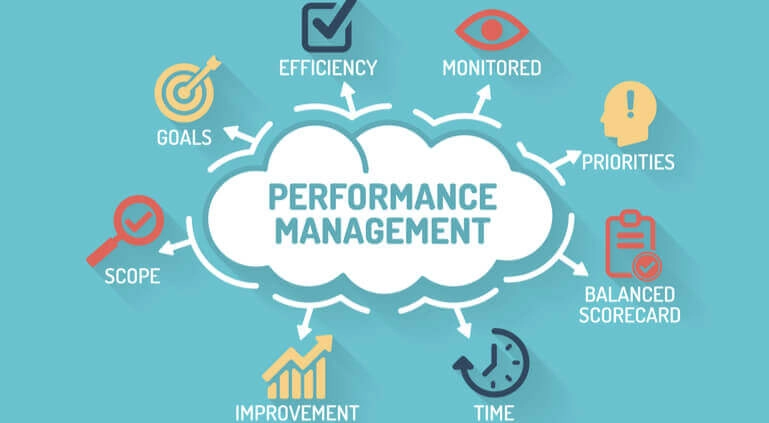The Evolution of the Workplace in Nursing
The Evolution of the Workplace in Nursing
Introduction
The nursing profession has undergone a remarkable evolution in the workplace over the years, shaped by historical, societal, and technological changes. From its humble beginnings to the sophisticated healthcare systems of today, nursing has played a pivotal role in the well-being of individuals and communities. This essay explores the multifaceted evolution of the workplace in nursing, encompassing the history of nursing and women in nursing, the evolution of nursing practice, new developments in the field, the impact of these advancements, the challenges faced by today’s nurses, and a glimpse into the future of nursing.
History of Nursing and Women in Nursing
The roots of nursing can be traced back to ancient civilizations where caring for the sick and injured was often a familial or communal responsibility. However, it was in the 19th century that nursing as a formalized profession began to take shape. Florence Nightingale, known as the founder of modern nursing, revolutionized the field during the Crimean War. Nightingale’s emphasis on hygiene, sanitation, and the humane treatment of patients laid the foundation for nursing as a respected and organized profession.
Women have historically been the primary caregivers within families and communities, and nursing provided a formalized outlet for them to contribute meaningfully to healthcare. In the early stages, nursing was often considered an extension of traditional female roles, aligning with societal expectations of women as caregivers. However, the dedication and compassion exhibited by these early women in nursing challenged prevailing norms, paving the way for the professionalization of the field.
As nursing evolved, women continued to play a central role in its development. Nursing schools and training programs became avenues for women to receive formal education and training, offering them opportunities for professional growth. The profession, once dominated by women, gradually expanded to include men, fostering diversity and enriching the collaborative nature of nursing teams.

The Evolution of Nursing Practice
The evolution of nursing practice has been a dynamic journey marked by significant shifts in education, roles, and responsibilities. From its early days as an apprenticeship-style vocation to the sophisticated profession it is today, nursing practice has continually adapted to the changing landscape of healthcare.
In the 19th century, nursing education transformed with the pioneering work of Florence Nightingale. She advocated for formalized training, emphasizing the importance of education in nursing practice. This marked a crucial turning point, as nursing shifted from an informal, often unregulated, apprenticeship model to structured educational programs. Nursing schools emerged, providing a comprehensive foundation in both theoretical knowledge and practical skills.
As nursing education advanced, so did the scope of nursing practice. Nurses became more knowledgeable and skilled, embracing evidence-based practices that aligned with the evolving field of medical science. The emphasis on continuous learning became a hallmark of the profession, ensuring that nurses remained at the forefront of healthcare advancements.
The role of nurses expanded beyond the confines of hospital settings. Community health nursing emerged to address the healthcare needs of populations outside traditional care settings. Nurses became advocates for preventive care, health education, and community outreach, playing an integral role in promoting public health.
Specialization within nursing became increasingly prevalent, with nurses choosing to focus on specific areas such as pediatrics, geriatrics, critical care, and various specialties. This diversification allowed nurses to tailor their expertise to the unique needs of different patient populations, contributing to more specialized and effective healthcare delivery.
The 21st century brought about unprecedented technological advancements that further transformed nursing practice. Electronic Health Records (EHRs) streamlined documentation, enhanced communication among healthcare professionals, and improved patient safety. Telehealth became a significant component of nursing practice, offering remote consultations, monitoring, and education, particularly valuable in reaching underserved or rural populations.
The evolution of nursing practice reflects a continuous commitment to education, specialization, and adaptation to emerging technologies. From the foundational principles laid by Florence Nightingale to the integration of cutting-edge technologies, nursing practice has evolved into a dynamic and integral component of modern healthcare, consistently striving to provide optimal patient care in an ever-changing environment.
New Developments in Nursing
The landscape of nursing has been significantly reshaped by innovative developments, ushering in a new era marked by advancements in technology, research, and healthcare delivery. These new developments in nursing not only enhance patient care but also redefine the roles and capabilities of nursing professionals.
One of the most transformative changes in recent years is the widespread integration of technology into nursing practice. Electronic Health Records (EHRs) have revolutionized the way healthcare information is documented, accessed, and shared. This digital shift ensures more efficient communication among healthcare team members, reduces errors, and promotes seamless coordination of patient care. Nurses now navigate comprehensive electronic databases, allowing for real-time access to patient histories, medications, and treatment plans.
Telehealth has emerged as a game-changer in nursing, particularly in expanding access to care and overcoming geographical barriers. Through video consultations, remote monitoring, and virtual communication tools, nurses can provide timely interventions and healthcare services to patients in the comfort of their homes. This has proven especially crucial during public health crises, enabling healthcare professionals to maintain continuity of care while minimizing the risk of spreading infectious diseases.
Advancements in nursing research have paved the way for evidence-based practices and personalized medicine. Nurses actively engage in research activities, contributing to a growing body of knowledge that informs clinical decision-making. The integration of genomics into nursing care allows for a more personalized approach to treatment, tailoring interventions based on an individual’s genetic makeup.
The development of sophisticated diagnostic tools has empowered nurses to deliver more precise and accurate care. From point-of-care testing devices to advanced imaging technologies, nurses can now quickly assess and diagnose medical conditions, enabling timely interventions and improving patient outcomes.
While these new developments in nursing bring about numerous benefits, they also pose challenges. Nurses must continually update their skills to navigate evolving technologies, ensuring they remain proficient in the use of electronic systems and telehealth platforms. The potential for information overload necessitates ongoing training and support to ensure nurses can effectively leverage these tools without compromising the quality of patient care.
The new developments in nursing represent a transformative shift towards a technologically advanced and research-informed profession. As nurses embrace these innovations, they not only enhance their ability to deliver high-quality care but also contribute to the ongoing evolution of healthcare delivery systems, fostering a future where nursing remains at the forefront of positive patient outcomes and improved healthcare experiences.

Impact of New Developments
The impact of new developments in nursing is profound and far-reaching, reshaping the dynamics of patient care, healthcare systems, and the role of nursing professionals. These advancements have not only improved the efficiency and effectiveness of nursing practice but have also significantly enhanced patient outcomes and experiences. (The Evolution of the Workplace in Nursing)
The integration of technology, particularly Electronic Health Records (EHRs), has streamlined the documentation process, facilitating better communication and collaboration among healthcare providers. This digital transformation has minimized errors, reduced redundant tasks, and improved the overall quality of patient care. Nurses can now access comprehensive patient information in real-time, enabling more informed decision-making and personalized care plans.
Telehealth has emerged as a key player in expanding access to healthcare services. The ability to conduct virtual consultations, remote monitoring, and telemedicine interventions has been especially critical in reaching underserved or geographically isolated populations. Patients can now receive timely care without the need for physical presence, improving accessibility and convenience.
The impact of nursing research on evidence-based practices has been instrumental in refining patient care strategies. Nurses actively contribute to research endeavors, ensuring that their clinical decisions align with the latest scientific knowledge. This emphasis on evidence-based care enhances the precision and effectiveness of nursing interventions, ultimately benefiting patient outcomes.
The integration of genomics into nursing practice has brought about a paradigm shift in healthcare. By tailoring treatments based on an individual’s genetic makeup, nurses can provide more targeted and personalized care. This precision medicine approach not only improves treatment efficacy but also minimizes adverse effects, leading to better overall patient experiences.
The use of sophisticated diagnostic tools in nursing has revolutionized the assessment and monitoring of patients. From handheld point-of-care devices to advanced imaging technologies, nurses can quickly and accurately diagnose medical conditions. This expeditious diagnosis enables prompt interventions, contributing to better prognoses and outcomes for patients.
While the impact of these new developments is overwhelmingly positive, challenges do exist. Nurses must navigate the learning curve associated with adopting and integrating new technologies into their practice. Continuous training and support are essential to ensure that nurses can harness the full potential of these innovations without compromising the quality of care.
The impact of new developments in nursing is transformative, ushering in an era of enhanced precision, accessibility, and personalized care. As nursing professionals adapt to these changes, they play a crucial role in shaping the future of healthcare, where patient-centered, evidence-based, and technologically advanced practices converge to create a more resilient and responsive healthcare system.
Issues Facing Today’s Nurses
Today’s nurses confront a myriad of challenges that impact both their professional well-being and the quality of patient care. Workforce shortages stand out as a significant issue, leading to high patient-to-nurse ratios and increased workload stress. This strain is exacerbated by the demanding nature of healthcare settings, contributing to burnout and fatigue among nurses.
The emotional toll of providing care to patients and their families, coupled with administrative burdens like documentation and compliance, adds to the complex landscape faced by nurses. The ongoing global health challenges, such as the COVID-19 pandemic, further amplify these stressors, underscoring the need for robust mental health support for healthcare professionals.
Advocacy for improved working conditions, adequate staffing levels, and comprehensive mental health resources has become essential. Additionally, fostering a supportive workplace culture that recognizes and addresses the unique challenges faced by nurses is crucial for retaining a resilient and motivated nursing workforce. Addressing these issues is imperative to ensure that nurses can continue delivering high-quality, compassionate care amidst the ever-evolving demands of the healthcare environment. (The Evolution of the Workplace in Nursing)
The Future of Nursing

The future of nursing holds promising transformations driven by technological advancements, interdisciplinary collaboration, and a focus on personalized care. Artificial intelligence (AI) and robotics are poised to revolutionize nursing practice, assisting in data analysis, predictive modeling, and routine tasks. This integration is expected to enhance diagnostic accuracy and treatment planning, allowing nurses to allocate more time to patient-centered care.
Interdisciplinary collaboration will become increasingly central in the future of nursing, fostering teamwork among healthcare professionals to provide holistic and comprehensive care. This collaborative approach, involving physicians, nurses, pharmacists, social workers, and other professionals, aims to address the diverse needs of patients within a unified framework.
Moreover, precision medicine, tailored to individual genetic profiles, will redefine treatment strategies, marking a shift towards more personalized and effective interventions. This advancement reflects a commitment to individualized patient care that considers genetic predispositions and responses to treatment.
As the nursing profession embraces these innovations, there is a need for continuous education and adaptability among nurses. The future will require nurses to be adept at leveraging technology, collaborating across disciplines, and delivering care that is increasingly tailored to the unique characteristics of each patient. By navigating these changes, nurses are poised to play a pivotal role in shaping a future healthcare landscape that is patient-centric, technologically advanced, and characterized by seamless interdisciplinary collaboration.
Conclusion
The evolution of the workplace in nursing reflects a dynamic tapestry woven through the historical resilience of women, advancements in nursing practice, and transformative developments shaping the profession. From Florence Nightingale’s pioneering influence to the integration of technology and interdisciplinary collaboration, the trajectory of nursing has been one of continuous adaptation.
The impact of new developments, such as Electronic Health Records, telehealth, and precision medicine, underscores a future where nursing thrives in personalized, technologically advanced care. However, challenges persist, with workforce shortages and emotional strains on nurses demanding urgent attention.
As we peer into the future, nurses must remain adaptable and resilient, equipped to navigate the complexities of evolving healthcare systems. Addressing current challenges and fostering supportive environments will be pivotal, ensuring that the nursing profession continues to stand as a cornerstone of compassionate, patient-centered care in the ever-evolving landscape of healthcare. (The Evolution of the Workplace in Nursing)
References
American Nurses Association (ANA). (2020). The future of nursing: Leading change, advancing health. Retrieved from https://www.nursingworld.org/~49e62b/globalassets/docs/ana/ethics/futureofnursingreport.pdf
Institute of Medicine (IOM). (2011). The future of nursing: Leading change, advancing health. Retrieved from https://www.ncbi.nlm.nih.gov/books/NBK209881/










